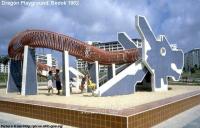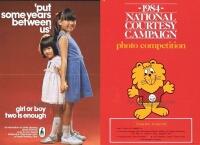Kopitiam, literally means coffee shop (coffee in Malay and shop in Hokkien), is commonly found all over Singapore and Malaysia. It serves as a place for common folks to eat and drink, or just gather around to chit chat or gossip about the latest news.
One of the oldest kopitiam in Singapore, Tong Ah Eating House is located at Keong Saik Road, a street in Chinatown that was named after Chinese businessman Tan Keong Saik in 1926 but is more well-known as a place where prostitutes and gangsters roamed the 1960s.
Selling old-styled local breakfast (half-boiled eggs, kaya toast with kopi or teh), the kopitiam, established in 1939, also serves zi char nowadays during lunch and dinner times.

The oldest Hainanese coffeeshop currently in Singapore belongs to Killiney kopitiam at Killiney Road. It started off as Kheng Hoe Heng Coffeeshop in 1919 by a Hainanese Foo-surnamed family. However, it was bought over in 1992, modernised over the years and developed into a franchise in local and oversea markets.

Do you know the local kopitiam lingo for ordering different types of beverages? Over the decades, the names of the drinks have evolved to become a unique mixture of Malay, Hokkien, Cantonese, Hainanese and also some Chinese and English.
Common Terms used for Beverages & Food found in a Kopitiam
Tea:
Teh – Tea with condensed milk and sugar
Teh Peng – Teh with ice
Teh Siew Dai (“siew dai” 少底 means less bottom in Cantonese) – Teh with less sugar
Teh Gar Dai (“gar dai” 多底 means more bottom in Cantonese) – Teh with more sugar
Teh Kosong – Teh without sugar
Teh O – Tea with sugar, but without milk
Teh O Peng – Teh O with ice
Teh O Siew Dai – Teh O with less sugar
Teh O Gar Dai – Teh O with more sugar
Teh O Kosong – Teh O without sugar
Teh C (“C” means fresh in Hainanese) – Tea with carnation milk and sugar
Teh C Peng – Teh C with ice
Teh C Kosong – Teh C without sugar
Diao Her (“fishing” in Hokkien) – Tea with teabag
Jio Kia (“mirror” in Hokkien) – 1/3 tea, 2/3 hot water
Teh Tarik (“pulled tea” in Malay) – Foamy tea with milk (usually found at Muslim stalls)
Teh Halia – Tea with milk and ginger water (usually found at Muslim stalls)
Teh Masala – Teh Tarik with added Spices such as cinnamon, cardamom, fennel and ginger (usually found at Muslim stalls)
Coffee:
Kopi – Coffee with condensed milk
Kopi Gao – Thick kopi
Kopi Di Lo (“di lo” 直落 means all the way down in Hokkien) – Extra thick kopi
Kopi Poh – Thin kopi
Kopi Peng – Kopi with ice
Kopi O – Black coffee without milk
Kopi O Siew Dai – Kopi O with less sugar
Kopi O Gar Dai – Kopi O with more sugar
Kopi O Kosong – Kopi O without sugar
Kopi C – Coffee with evaporated milk
Kopi C Siew Dai – Kopi C with less sugar
Kopi C Gar Dai – Kopi C with more sugar
Kopi Sua – Extra order of kopi
Kopi Tarik (“pulled coffee” in Malay) – Foamy coffee with milk (not common in Singapore)


Others:
Tak Giu (“kick ball” in Hokkien) – Milo (due to the football player image on the Milo can)
Tak Giu Peng – Milo with ice
Milo Dinosaur – Milo ice with extra scoop of Milo powder on top
Milo Godzilla – Milo Dinosaur with double scoops of Milo powder on top
Dai Kar Ho (“everyone’s good” in Cantonese) – Horlicks (phonetic name)
Lao Hor (“tiger” in Hokkien) – Tiger Beer
Ang Ji Gao (“red-tongued dog” in Hokkien) – Guinness Stout (due to the dog image on the beer can)
Kim Boon Tai (“Clementi” in Hokkien) – Home-made lemon tea (phonetic name)
Lai Kor (“underwear” in Hokkien) – Coke Light (phonetic name)
Buay Si Gor Lark (“8456” in Hokkien) – Pepsi Cola (phonetic name)
Xiao Bai Tu (“rabbit” in Mandarin) – Carrot juice
Siao – Home-made barley drink
Yuan Yang (“Mandarin ducks” in Mandarin) – Teh plus Kopi (common in Hong Kong but not very popular in Singapore)
Michael Jackson – Soya bean with grass jelly (not common in a typical local kopitiam)
Food:
Zar Tan (“bomb” in Hokkien) – Half-boiled eggs
Published: 17 February 2011
Updated: 29 August 2021








Definitely one of Singapore’s Cultures! 🙂
With this kind of kopitiam lingo, how can you possibly hire foreigners to work as coffee boys
?
You’ll be surprised that they caught on with the lingo and slang pretty well… except with a typical Chinese Accent…
This is so good, i love the Lai Kor hahahaha
How about the Ya Kun coffee shop or that Hainan coffee place? Are these as old as Killiney?
From http://sg.entertainment.yahoo.com/news/does-c-teh-c-mean-152812936.html
Although kopitiam drinks were originally sold by the Hainanese Ah Ko (uncle), their names are not entirely Hainanese, but mixtures of various languages. Kopi is Malay, C is possibly Hainanese (C means fresh), Po is Hokkien and Ka Dai is Cantonese (Ka means add, while some say dai is a mispronunciation of nai (milk) by the non-Cantonese, who were referring to the sweet condensed milk).
This one is cute!
KOPI SI KOSONG 🙂 YUMMY
I realise a typo..grass jelly became glass jelly!
The old kopitiam will close for good at the end of February 2014
I like Teh Tarik (“Pulled Tea” in Malay) – Foamy Tea with Milk (usually found at Muslim stalls)
A display of old cups and brands
(Source: National Heritage Board)
Any idea what is lang lai le?
A simple app to help users record drink orders for his/her group of friends or colleagues when ordering from drink stalls at hawker centres and food courts:
https://play.google.com/store/apps/details?id=jonathantan.grouporderfordrinks
What an amazing website and a source of cultural information! I am incorporating these places into my weekend walks.